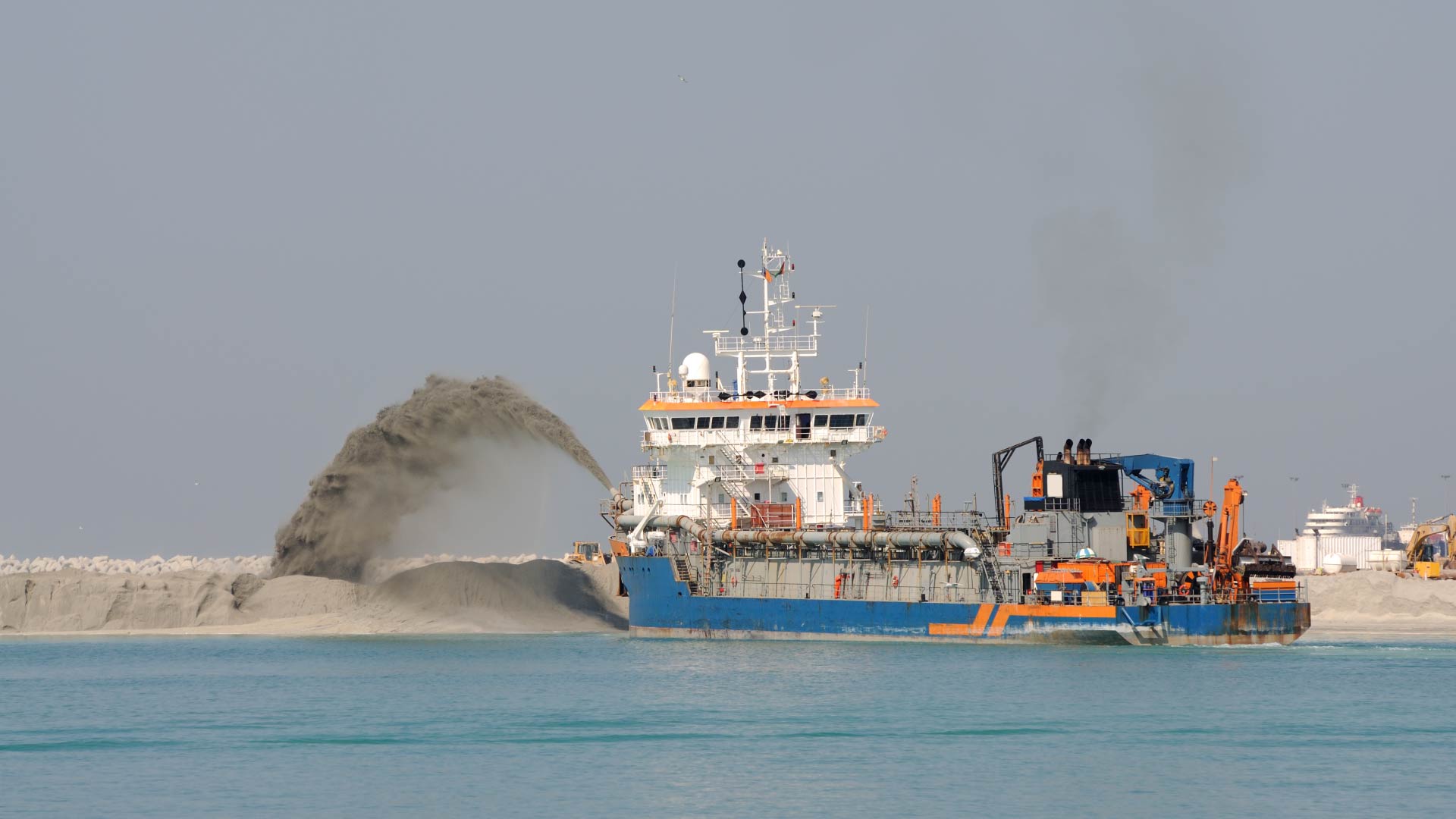Maintenance Dredging in the Port of Dunkirk
Baggerbedrijf De Boer, widely known as Dutch Dredging, has been dedicated to maintenance dredging in the Port of Dunkirk, France, for over a decade. Their expertise in dredging ensures that this vital port remains functional and accessible for vessels of all sizes.
Since 2010, Baggerbedrijf De Boer has maintained the water depth and width in Dunkirk’s port, allowing for uninterrupted operations. This annual maintenance dredging effort involves removing around 2.5 million cubic meters of dredged material each year, preserving the port’s infrastructure and optimizing it for commercial traffic.
Focus on Eastern and Western Port Areas
The dredging operations primarily target the Eastern and Western areas of the port, where sediment accumulation could otherwise limit navigability. By clearing these sections of sand and silt, Dutch Dredging ensures the port meets design specifications, enabling larger vessels to enter and exit safely.
How Dredging Maintains Port Depth
The primary focus of dredging in Dunkirk involves the removal of sand and silt that naturally accumulate over time. This material is then strategically managed based on environmental and operational needs.
Sand Deposition and Rainbowing on the Foreshore
The sand dredged from the port is either deposited in dedicated depots or redistributed along the foreshore. A technique called “rainbowing” is employed to spray the sand onto the designated areas, reinforcing the port’s shoreline and maintaining safe water depths.
Silt Disposal at Sea
The finer silt, meanwhile, is transferred to designated offshore locations to minimize environmental impact and prevent re-accumulation within the port. These carefully chosen sites allow for sustainable disposal of the silt while avoiding interference with marine ecosystems close to the shore.
Specialized Equipment Used for Dunkirk’s Maintenance Dredging
Over the years, Baggerbedrijf De Boer has deployed a fleet of specialized dredging equipment to handle the complex dredging tasks in Dunkirk.
Hopper Dredgers Elbe, Albatross, and Amazon
The hopper dredgers Elbe, Albatross, and Amazon play a critical role in Dunkirk’s dredging operations. These vessels are designed to efficiently remove large volumes of sediment, collecting the material in their hoppers before transporting it to deposition sites.
Bed Levelling with Janneke and Peter
In addition to the hopper dredgers, bed-levelling vessels Janneke and Peter are used to ensure even depths across the port bed. Bed levellers provide precise bottom profiling, which further enhances navigability and port safety.
The Impact of Decade-Long Dredging on Dunkirk’s Port
The Port of Dunkirk, as one of France’s major gateways, relies on these regular maintenance dredging efforts to support economic activity and vessel traffic. With an impressive record of removing millions of cubic meters of sediment annually, Baggerbedrijf De Boer’s expertise and advanced equipment have been instrumental in maintaining the port’s structural integrity and accessibility.
By deploying cutting-edge dredging techniques like rainbowing and utilizing powerful dredging vessels, Dutch Dredging has kept Dunkirk’s port in top condition, securing its place as a critical hub for commercial maritime operations.
